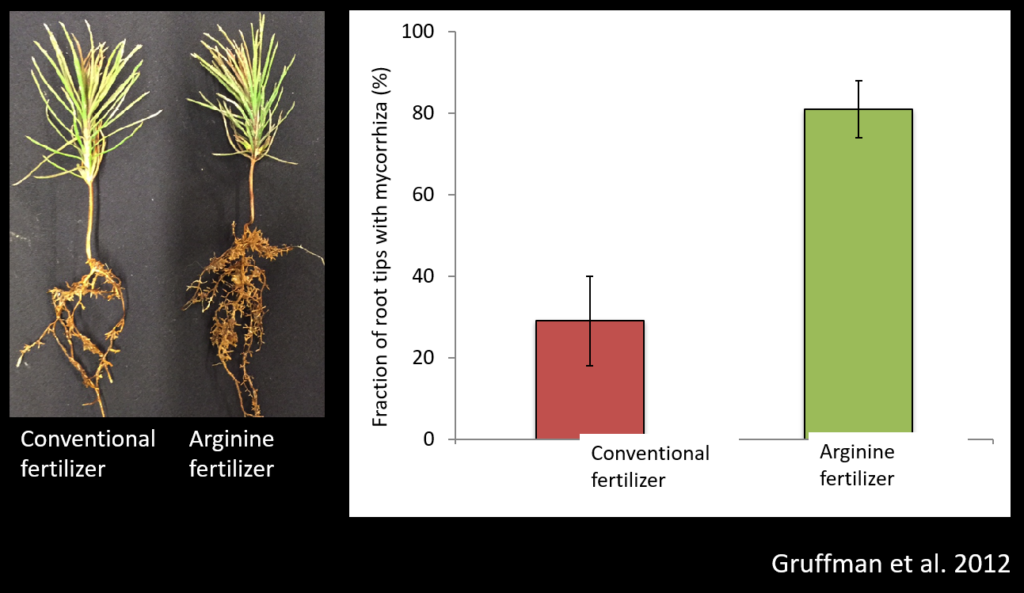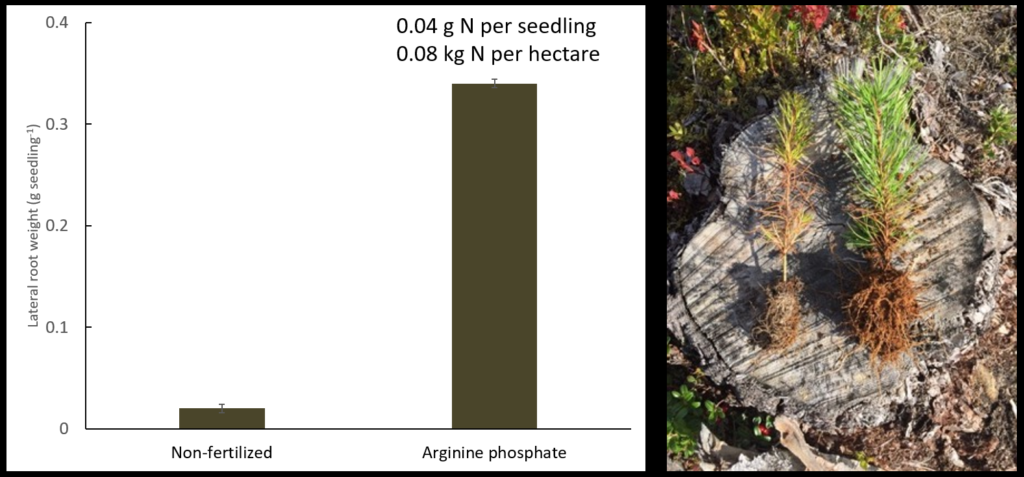Going beyond the common use of conventional fertilizer for plants, Professor Torgny Näsholm at the Swedish University of Agricultural Sciences (SLU), Umeå, Sweden, examined the role of amino acids in supplying the nitrogen required for the growth of forest trees. His studies showed that trees can absorb organic nitrogen from the soil, a breakthrough in explaining the nutrition of plants. For his discoveries, which was considered valuable for the forest-based sector, Näsholm was awarded the 2018 Marcus Wallenberg Prize.
What sources of nitrogen do roots encounter in the soil?
In different studies since 1998, Näsholm has examined the nutrition of forest trees, particularly Scots pine and Norway spruce. Instead of bring soil samples into the lab for experiments, Näsholm and his research team brought the lab out in the forest in order to study plants in their true environment. The researchers discovered that nitrogen from amino acids was taken up by tree seedlings and that the amino acid concentrations in forest soils are high enough to provide a substantial supply for tree uptake. The researchers could also testify that the major nitrogen source of pine and spruce in boreal forests is amino acids rather than ammonium ions or nitrate.
From scientific discoveries to useful applications: slow release fertilizer based on arginine
Based on the fundamental discovery, plants take up amino acids from the soil, Näsholm came up with the idea to develop sustainable fertilizers based on amino acids, arginine fertilizer. Field studies disclosed that this organic nitrogen source enhances the growth of roots of seedlings compared to conventional fertilizers (Figure 1) and compared to non-fertilized plants (Figure 2). By using arginine phosphate, leaching of nitrogen during seedling cultivation in nurseries was also decreased considerably.


The first patent for this approach was issued in 2000 and a fertilizer called Argrow, based on the amino acid arginine, was introduced on the market. The fertilizer is mainly used in forest nurseries in Sweden, and tests have been performed in Finland, USA, Canada, Uruguay, China, New Zealand and Australia. In 2015, arginine phosphate, a new type of slow release fertilizer, has been tested and developed with promising results. The results show that arginine phosphate strongly stimulates the growth of roots and enable plants to acquire nitrogen from the soil. The commercial phase of the fertilizer called Argrow Granular, based on arginine phosphate, started since 2019.
The effectiveness of using the new organic fertilizer for the growth of plants is one of notable results of Näsholm’s breakthrough. Only a small amount of 0.08 kilograms per hectare (equal to 0.04 gram per seedling) of the new fertilizer is required for the same effect compared to the use of fossil-based conventional fertilizers that could be in the approximate range of 150 kilograms per hectare for similar circumstances. The study also showed that it is possible to significantly shorten the rotation time of the trees by using the new fertilizer while removing completely the risk of unintentionally fertilizing the ground water and water ways.
Contribution to the realisation of FTP Vision Targets
The R&I breakthrough made by Torgny Näsholm and his research team has led to an evolution in the understanding of the ecosystem of forest trees and an important impact on nursery and forestry practices. From the fundamental discoveries to the development of sustainable fertilizers based on amino acids, the project helps to stimulate the growth of plants, which contributes to the realisation of two vision targets of FTP:
Vision target 1: Sustainable forest management, biodiversity and resilience to climate change
- Strengthening forest ecosystem resilience and fostering Climate Smart Forestry
Vision target 2: Increased, sustainable wood production and mobilization
- Improving seeds, seedlings and plants to increase productivity and resilience
FTP’s Vision target 2 aims to increase harvesting possibilities of forests in Europe by 30 percent, between now and 2040, which is a very ambitious target. However, the breakthrough of Näsholm potentially shows a feasible way to make it happen.
References:
Torgny Näsholm’s presentation on “Feeding forests with amino acids” at the FTP Annual Conference 2019 https://www.youtube.com/watch?v=TL7SLdEWV_M&feature=youtu.be
Press release from the Marcus Wallenberg Prize: The Marcus Wallenberg Prize for findings on the nutrition of trees https://mwp.org/content/uploads/2018/09/MWP-2018-Press-release-Award-180925-ENG.pdf
The Strategic Research and Innovation Agenda of the Forest-based Sector (SIRA) 2030 http://new-www.forestplatform.org/system/attachments/files/000/000/692/original/SIRA_2030.pdf?1574846949

